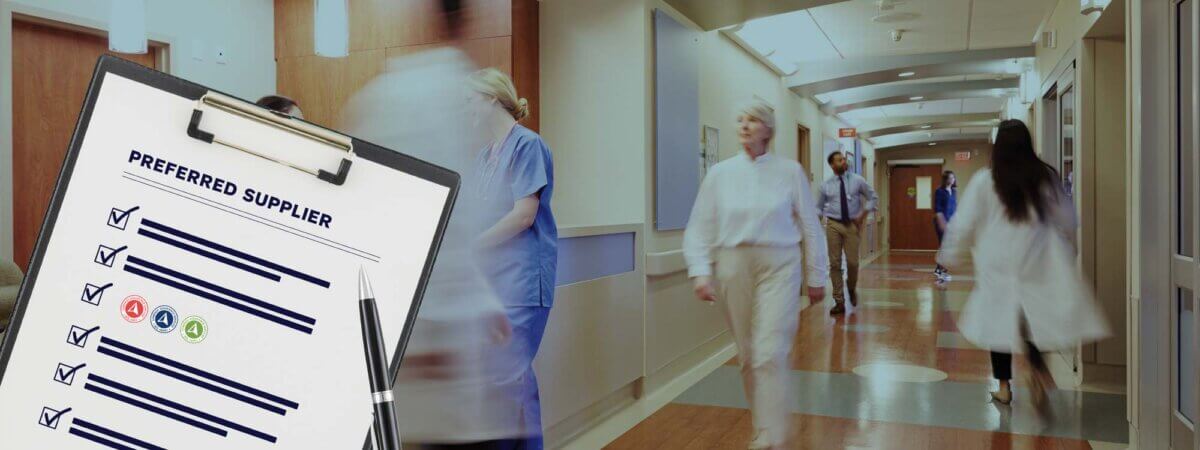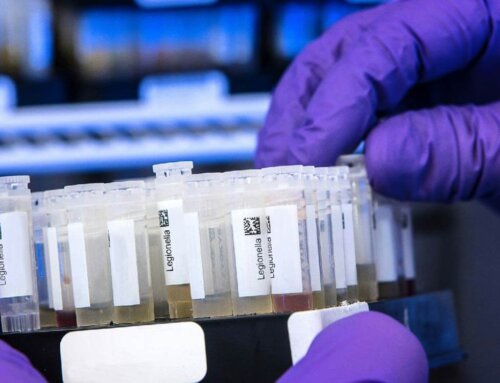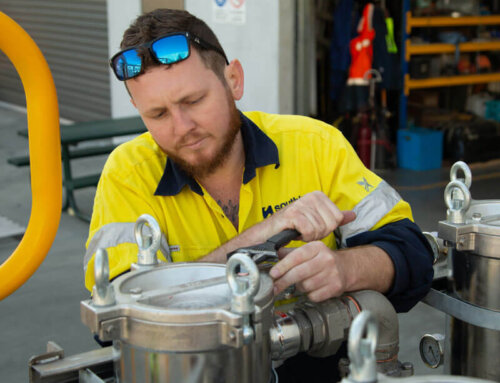Date: 31/07/2025
Read Time: Four minutes
Author: Surani McCaw, B.E. (Chemical), Ph. D.

Key points:
- Engaging Standing Offer Agreement (SOA) approved suppliers ensures quality – These vendors meet ISO standards, have proven experience, and offer reliable support throughout the system's lifecycle.
- Don't mix up technical responsibilities – RO plants have a different lifespan and compliance focus than sterilisation or plumbing systems, which aren't designed to manage microbial water quality.
- Bypassing the SOA process can be costly– It can lead to microbial non-compliant water, lack of service support, and expensive remediation. Using specialist vendors and stronger procurement controls helps to control the risks.
Introduction
Reverse Osmosis (RO) plants are essential for maintaining compliant water quality in Central Sterile Services Departments (CSSDs) and other clinical environments. In NSW Health Infrastructure projects, these systems are usually procured through one of two models:
1. NSW HealthShare STE830 Standing Offer Agreements (SOAs):
- The hospital or health district purchases the RO plant directly
- Alternatively, the RO plant is included in the sterilisation equipment package as part of the supplier’s scope. Sometimes in these cases, the RO vendors may be selected by the supplier, bypassing SOA governance and compliance requirements.
2. Facility Builder Model:
- The RO plants are procured through hydraulic contractors or plumbing contractors, frequently bypassing SOA governance and contractual compliance.
While both models are widely adopted, they often place responsibility for RO systems with vendors who lack specialist expertise in water treatment and infection control. This misalignment can lead to significant risks, including non-compliance with AS 5369:2023 (formerly AS/NZS 4187:2014), reduced system lifespan, and poor overall performance.
Why SOA compliance matters?
Securing an SOA contract isn't just about competitive pricing, it's about demonstrating proven capability and reliability required to deliver in critical environments. Preferred suppliers must show:
- ISO Accreditation: A clear commitment to quality, safety, and environmental responsibility.
- Proven Track Record: A history of delivering complex projects with rigorous compliance and risk management practices.
- Adequate Staffing: A team of qualified, permanent personnel who provide on-call and after-hours technical support alongside preventative maintenance programs.
While SOA principles apply to all equipment, grouping should align with the technical domain, expected lifecycle, and compliance risk:
- RO plants typically have a 10–15 year operational lifecycle.
- Sterilisation equipment generally has a 7–10 year lifecycle.
- RO systems fall under water treatment engineering, while sterilisation equipment is classified as a medical device.
- Hydraulic systems are warranted for flowrate and pressure, not microbial compliance, unless Legionella issues emerge within the warranty period.
Bundling RO plants with sterilisation or hydraulic packages often compromises system performance. Vendors outside the water treatment field typically lack the specialised expertise needed to manage RO systems throughout their full lifecycle.
- Maintain compliance with infection control water quality standards.
- Design systems ensuring both operational reliability and regulatory compliance.
What Happens When the SOA Process Is Bypassed?
A critical loophole occurs when RO plants are procured under the Facility Builder Model or bundled within the sterilisation equipment supplier's scope. In both cases, the SOA process and its governance is bypassed. This poses serious risks for hospitals.
Exposing the loophole
Bypassing the Preferred Supplier framework results in serious financial and operational consequences:
- Microbial compliance failures (often caused by endotoxins) can occur after the Defect Liability Period (DLP), resulting in failed audits and increased infection risks.
- Service gaps emerge when:
- The vendor's DLP expires, and they are no longer responsible for system performance or compliance
- The RO suppliers lack staffing, resources or expertise to provide after-sales support, respond to critical alarm response, or carry out preventative maintenance.
These failures can cost healthcare facilities hundreds of thousands of dollars in remediation, and ultimately, it's the taxpayer who bears the cost. More importantly, they expose healthcare facilities to unnecessary operational risk and jeopardies patient safety.
Real-World Example
We’re often engaged to fix RO plants that we didn’t design or installed. In many cases, these systems failed completely, usually because microbial control wasn’t properly considered during the original design phase.
While the initial tender bid may have seemed like a cost-effective option, problems typically begin after the 12–24 month Defective Liability Period (DLP) expires. Once bacteria infiltrate the system, and there’s no contractual requirement for ongoing maintenance, the contractor walks away. The hospital is left to deal with the consequences.
Bottom line: Procurement loopholes like this place a heavy financial burden on government departments and create unnecessary risks to patient safety.
So, what’s the solution?
Addressing these issues starts with prioritising specialist expertise and clear accountability:
- Engage RO suppliers approved under the NSW HealthShare STE830 SOA – These vendors specialising in water treatment engineering, hold ISO-accreditation, and meet the requirements of AS 5369:2023.
- Keep technical domains separate under SOA – group equipment by lifecycle, compliance needs, and engineering discipline to prevent blurred responsibility.
- Ensure lifecycle accountability – RO vendors should remain responsible for system performance, compliance and maintenance beyond the initial project handover.
- Tighten procurement policy – Apply the Preferred Supplier frameworks consistently to guarantee quality, compliance, safety, accountability and long-term value.
Doing the job properly the first time isn’t just best practice, it’s regulatory requirement and a critical step in protecting patient safety. Preferred Suppliers invest significantly in proven quality systems, local support, and technical expertise to deliver lasting outcomes for healthcare infrastructure. Leveraging their expertise is both a sound clinical decision and smart investment
At Southland Filtration, we’re here for the long haul. As a leading Australian provider of tailored commercial water filtration solutions, we bring deep experience in hospital and healthcare environments.
Get in touch?
Let's have the right conversations before the wrong systems are installed.
Contact us today at 1800 656 771 or email Andrew.





